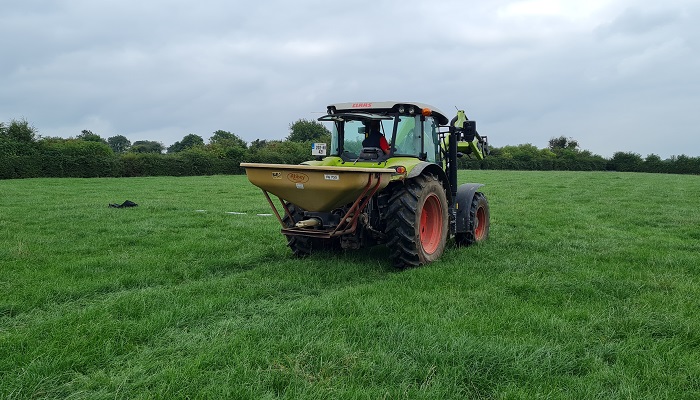31 March 2025
Fertilising first cut silage crops – correct application ensures correct cutting date

What happens on farm over the next few weeks will have a significant impact to silage stocks on dairy farms for next winter. James Dunne discusses the importance of managing silage stocks, emphasizing the need for a good yield of high-quality first cut crop.
‘Silage in the yard is money in the bank’. This is an age old idea, but it remains a core principle of managing risk on dairy farms. A rolling reserve of one months feed (equivalent to about two bales) above normal winter feed requirements should be in place to cope with adverse weather. Therefore the requirement of having a good yield of a high quality first cut crop for cutting in mid-May is essential.
This cutting date will ensure subsequent cuts aren’t delayed, thus maximising annual yield rather than looking for a “bulky” first cut, which will ultimately not only reduce the quality of the feed available but also the subsequent yield from a second cut crop, while also doing away with the possibility of a third cut where forage deficits are identified. Cutting date should not be delayed as this will only add to any forage shortages next winter.
What does a good quality first cut crop require?
Grass silage has a large nutrient demand and adequate N, P & K is essential for maximising grass yield and producing sufficient winter feed as we head into the most efficient time for nutrient use (April & May).
Nitrogen (N)
Nitrogen is the key driver of grass yield. Grass swards with high levels of perennial rye grass will use N more efficiently than older swards. Recently reseeded swards (0-3 years) will have 25% higher N demand. A crop of grass silage (5t/ha of DM) will require 125 kg N/ha (100 units/acre) this traditionally will be a combination of slurry and chemical nitrogen. Grass silage will take up on average 2.5kg/ha/day of N (2units/day), therefore apply total nitrogen 50 days before cutting to ensure full crop N utilisation. Where nitrogen application is further delayed in light of weather and ground trafficability, it should be reduced on a pro rata basis (i.e. 40 days X 2 units per day = 80 units).
Phosphorus (P) and Potassium (K)
P and K are essential to maximise grass yields, therefore adequate supply of these nutrients in the soil is critical. Consult the most recent (3 to 5 years) soil test reports to determine the P and K requirements (in organic manure and fertiliser) for silage fields.
A crop of grass silage will remove approximately 4kg P and 25kg K /tonne of grass DM. Organic manures are an effective source of N, P & K, and can provide a large proportion of crop P and K requirements at relatively low cost. For example, 3,000 gallons/ac of good quality cattle slurry (6% DM) will supply sufficient P and K levels to grow a crop of grass silage where soil fertility levels are optimum. Where silage ground hasn’t received slurry to date this spring, it is likely there is too high of grass covers to allow an application at this stage. Farmers should look to get their P & K requirements through the use of a suitable compound fertiliser and do so in consultation with their local advisor to ensure they have the P allowance.
Don’t Forget Sulphur (S)
Sulphur deficiency is most likely on light sandy / free draining soils with low soil organic matter. Current research shows that S deficiency is not just confined to light textured soils and S deficiencies are occurring on heavy textured soils in early spring. Grass silage crops have a requirement of 20kg S/ha per cut. The application of S to soils where it is required will improve grass DM yields and quality as it helps to maintain an optimum N:S ratio and N to be used more efficiency.
